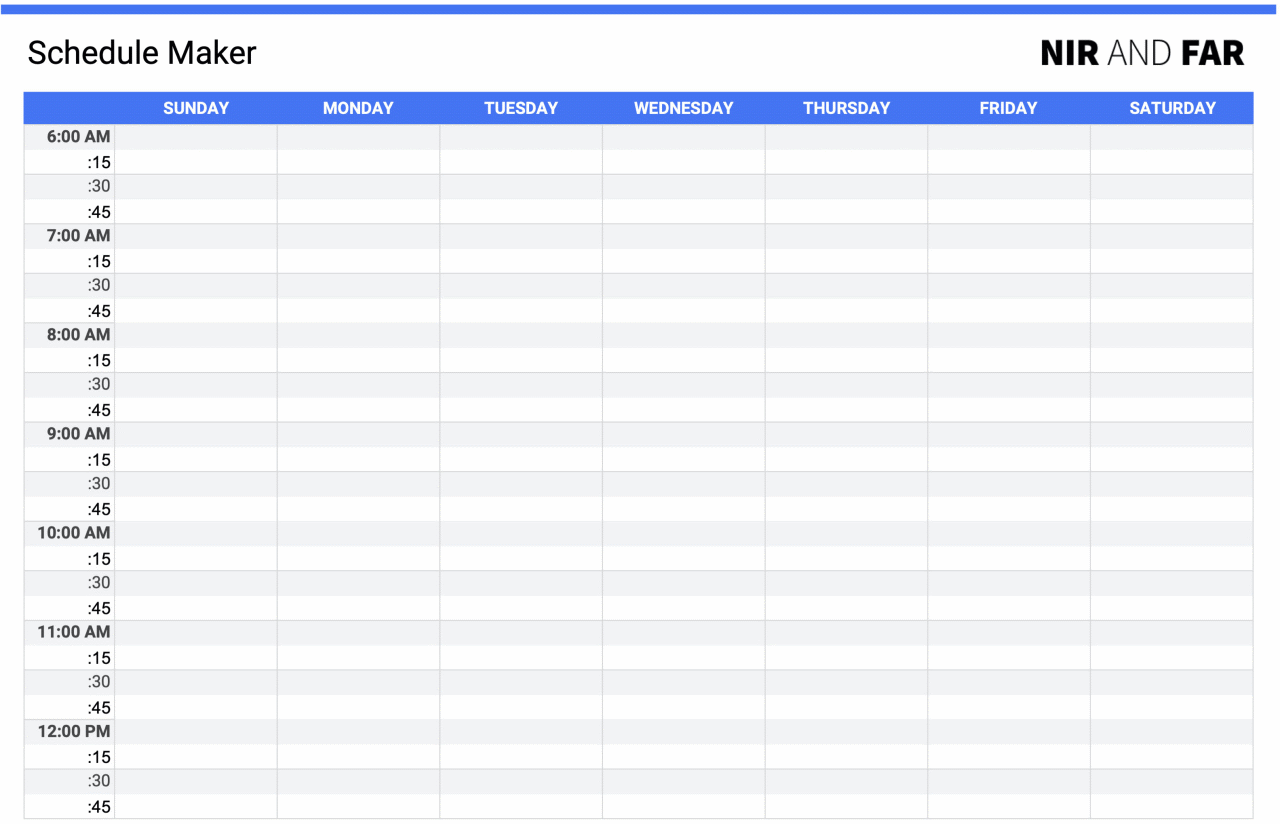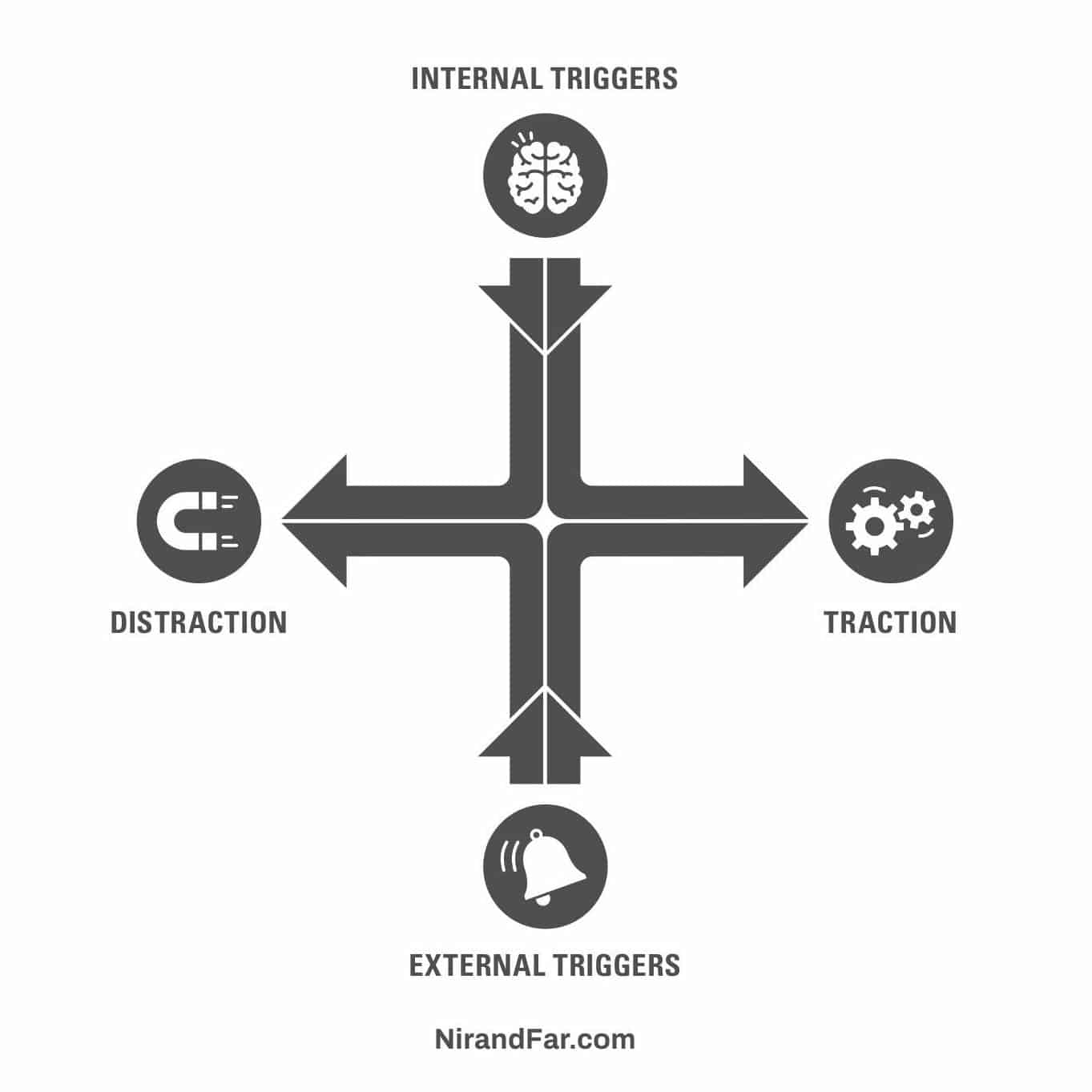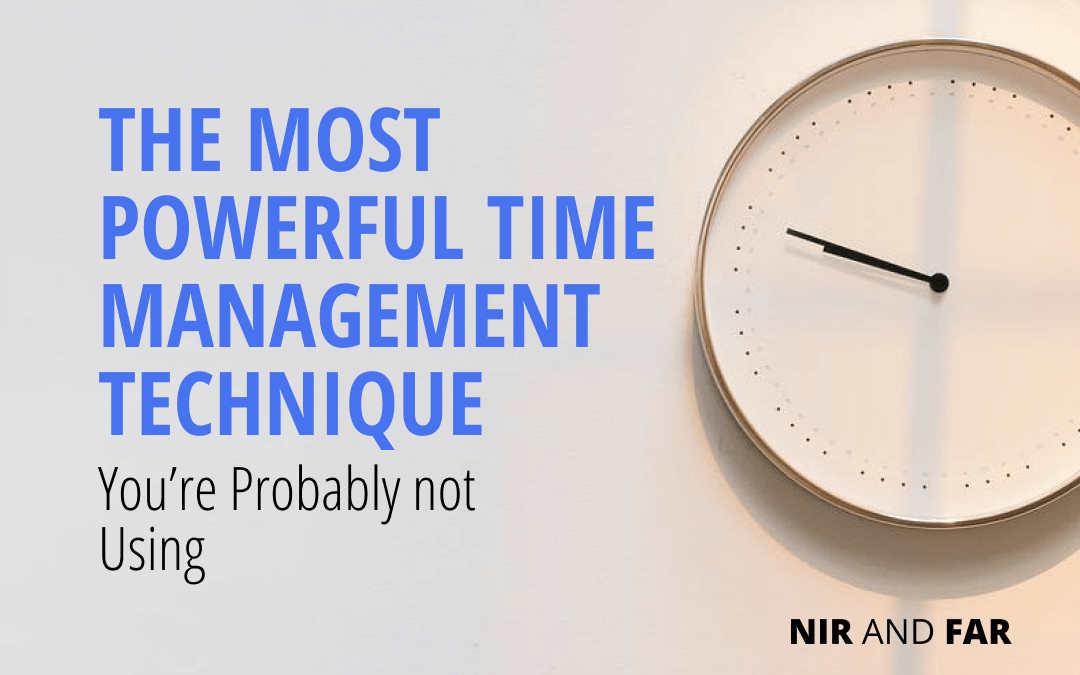Timeboxing (AKA “the time boxing technique” or”time blocking”) is the nearest thing we have to productivity magic, yet most people don’t utilize it. Here’s how to overcome the top 3 reasons why.
“I can’t seem to get important tasks done.”
“I’m always distracted.”
“Why do I always lose focus?”
I hear these complaints from my clients and readers all the time.
But when I recommend perhaps the most effective time management technique ever devised to help people stay on track, most of them balk.
“You want me to plan every minute of my day?”
Yes! Now what are you waiting for?
What is Timeboxing?
Timeboxing is among the most well-studied and powerful methods we know for getting things done. Both Elon Musk and Bill Gates use this time management technique. It amounts to boxing out periods of time to work on distinct tasks each day, using timeboxing apps on your smartphone or a tool like this schedule maker:

Despite all the complaining about how distracting the world is given the cacophony of beeping and buzzing emanating from our digital devices, most people have no right to complain.
You can’t call something a distraction unless you know what it is distracting you from. But how do you know what you got distracted from if you don’t plan your time?
In order to finally destroy distraction and live the life you want, you need to start living your life with intent.
Is timeboxing a better time management technique than a to-do list?
Timeboxing is far more effective than running your life with a to-do list of individual tasks. Along with a habit tracker template, successful timeboxing is a critical component of becoming indistractable, and a surefire way to increase productivity.
Having a strict limit on the time spent on a planned activity is a defense against the trap of Parkinson’s law, which says that work expands to fill the time available to complete it. You can still take short breaks, or use the Pomodoro technique as a motivating factor for work sprints.
If you don’t plan your day in advance in an organized schedule—according to your values and your schedule—someone else will plan it for you.
Whether it’s the social media sites, the news, your boss, your kids, or something else, you’ll always get distracted unless you decide in advance how you want to spend your time.
Timeboxing will change your life. It works because it uses a well-researched technique psychologists call, “setting an implementation intention,” which is just a fancy way of saying, “planning out what you are going to do and when you will do it.”
Sadly, people often give up before they’ve even tried timeboxing. As a result, they miss out on the almost magical benefits of timeboxing.
Here are the three most common reasons people don’t timebox, along with their solutions.

Timeboxing Pitfall #1: What-Aboutism
It’s maddening how many people spend hours scrolling for productivity hacks, read books they hope will contain secrets to success, or pay thousands of dollars for courses and gurus they hope will have the answers they seek—and yet, when they finally find a technique that will actually 10X their effectiveness and life satisfaction, they immediately find reasons why it won’t work for them.
I hear it all the time.
“But what about… [insert something that makes your case the special exception].”
Timeboxing works. It is the most studied, most verified technique for sustaining good routines, maximizing productivity, and acting on your values in general. There is a huge amount of evidence to support its effectiveness, and that pile of evidence grows every year.
Yet despite the overwhelming number of studies, many people look for reasons why it won’t work in their super special circumstance.
This is “what-aboutism”—searching for excuses for why a methodology won’t work instead of giving it a real try to find ways to make it work.
Solution: Start small. Time management takes time!
If you’ve never tried to use timeboxing before, suddenly switching to building a whole schedule for the week is daunting.
That’s okay—you can start small.
Try timeboxing one day per week, or even just one afternoon per week. Try that for a few weeks and see how it works out.
Did you turn your values into time? Did you do what you said you were going to do? Then slowly build to more days per week.
Keep in mind the only measure of success is not “how many boxes did I tick-off on my to-do list?,” but rather, “did I do what I intended to do without getting distracted.”
You’ll find that consistently working without distraction for set periods of time will make you more productive than flailing around from one task to the next on your to-do list.

Free Schedule Maker Template
Take back control of your time and design your ideal day.
Your email address is safe. I don't do the spam thing. Unsubscribe anytime. Privacy Policy.

Timeboxing Pitfall #2: Not realizing it’s an iterative process
Look, I wrote the book on being indistractable, and even I occasionally get distracted.
Timeboxing has made my life astonishingly more peaceful and productive, but I still fall off track from time-to-time (though very rarely.)
When circumstances suddenly change, life can throw us for a loop, but that doesn’t mean we stop timeboxing. It means we adjust our time boxes and calendars to make our schedules easier to follow on the next go-around.
Timeboxing is an iterative process.
If you’ve started timeboxing and you find yourself deviating from the schedule, don’t give up. Once you timebox a day, follow your schedule to the best of your ability and get back to the next thing you planned to spend your allocated time on.
When you do get distracted, write down what happened so you can make sure you don’t succumb to the same distraction in the future.
But don’t beat yourself up for getting distracted. Instead, simply adjust your schedule for the day or week ahead to see what would work better.
It takes time to get into a groove, and that’s okay. You’ll also need to make adjustments to accommodate life changes. But as long as you make those changes in advance, and not in the moment, you’ll live your life with intent.
Solution: Think like a scientist, not a drill sergeant.
Once you understand that timeboxing is an iterative process, not set-it-and-forget-it, you can make your schedule work better for your needs. By experimenting and fine-tuning how you allocate your time, you can continuously improve your productivity and make meaningful progress towards your goals.
By approaching timeboxing like a scientist, not a drill sergeant, you’ll run experiments based on your hypotheses of how to build the best possible schedule for your needs.
Every week, I have a 15-minute slot on my schedule to review the week that passed and the week ahead. That little time block is all I need to make adjustments and prepare for the timeboxed week to come.

Timeboxing Pitfall #3: Succumbing to psychological reactance
Psychological reactance is an emotional response we feel when someone tells us what to do (or what not to do).
It’s that knee-jerk feeling of, “Don’t boss me around!”
Everyone feels it. Whenever we feel our autonomy is threatened, we tend to rebel. It’s human nature and studies support this widely observed psychological phenomenon.
Weirdly enough, that knee-jerk reaction kicks in even when it’s you telling yourself what to do.
This misplaced reactance can happen even to advanced timeboxers. More often, I hear the siren song of psychological reactance when people complain that timeboxing is “too rigid” or “no fun.” Of course, nothing could be further from the truth.
As Jocko Willink says, “discipline equals freedom.” We all know we do our best work when we have constraints, and timeboxing gives us just that in the form of time on our schedules.
The truth is, when people resist timeboxing, they are most often afraid of actually having to do hard work.
Fear of doing the things we know we need to do elicits reactance. Of course, this is completely nuts! If anything, we should be jumping for joy that we finally have a proven method to get ourselves to do the things we know we should.
Yet, when we feel psychological reactance, we sabotage our own best interest by concocting excuses to escape the feeling of being told what to do.
Solution: Disarm psychological reactance.
Disarming psychological reactance is easy.
Remind yourself, “I don’t have to follow this schedule; I get to follow this schedule. It’s my choice. I’m in charge.”
You run your own life. You are the boss. Your time belongs to you, and by timeboxing, you get to have maximum agency over how you spend it. Leaders can also leverage referent power to inspire and guide their teams to adopt timeboxing by modeling respect and admiration.
Become indistractable
While timeboxing is a fantastic tool, on its own, however, it isn’t enough.
Rather, timeboxing works as part of the four-part indistractable model—which involves understanding the foundational psychological concepts that are at work in your brain, such as understanding internal triggers, managing external triggers, and utilizing precommitments.

Timeboxing works and is a life-changing practice. Now that you know how to overcome the three biggest barriers to utilizing this well-studied productivity technique, give it a shot. No excuses!
Related Articles
- Schedule Maker: a Google Sheet to Plan Your Week
- Habit Tracker Template in Google Sheets
- The Ultimate Core Values List: Your Guide to Personal Growth
- Timeboxing: Why It Works and How to Get Started in 2025
- An Illustrated Guide to the 4 Types of Liars
- Hyperbolic Discounting: Why You Make Terrible Life Choices
- Happiness Hack: This One Ritual Made Me Much Happier

